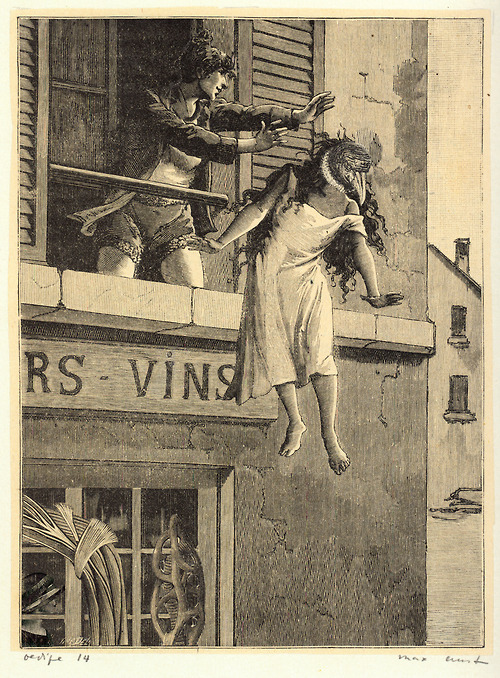Max Ernst 1891-1976
31 08 2017Comments : Leave a Comment »
Tags: Max Ernst
Categories : art, Culture, German painters, painters, painting, paintings, Uncategorized
Max Ernst
10 06 2015As my art teacher used to say, Max you’re too earnest. Or was it serious. Ernst was a serious artist. He left his wife and son and moved to Paris where he settled into ménage à trois with the Éluards. I don’t know who the Eluards were but I’m sure they were wonderful people. The war started. When Ernst wasn’t being chased around by the gestapo he did a lot of work. They chased him to America. The woman he left behind, Leonara Carrington, had a nervous break down. The woman who took him to America, Peggy Guggenheim, married him. But the marriage didn’t last long. He divorced Peggy and married Dorothea Tanning. He started to have success as an artist and stopped getting married.






Comments : 3 Comments »
Tags: Max Ernst
Categories : art, Culture, paintings, surreal, Uncategorized
Max Ernst
30 12 2013It is always fun and interesting to have a look at Ernst’s work. His use of story line in his collages has had a huge affect on both artists and writers. And the birds…
Comments : Leave a Comment »
Tags: Max Ernst
Categories : 20s, art, Collage, Culture, fantasy, illustration, paintings, surreal, Uncategorized
Max Ernst
20 07 2012As my art teacher used to say, Max you’re too earnest. Or was it serious. Ernst was a serious artist. He left his wife and son and moved to Paris where he settled into ménage à trois with the Éluards. I don’t know who the Eluards were but I’m sure they were wonderful people. The war started. When Ernst wasn’t being chased around by the gestapo he did a lot of work. They chased him to America. The woman he left behind, Leonara Carrington, had a nervous break down. The woman who took him to America, Peggy Guggenheim, married him. But the marriage didn’t last long. He divorced Peggy and married Dorothea Tanning. He started to have success as an artist and stopped getting married.
Comments : Leave a Comment »
Tags: Max Ernst
Categories : art, Collage, Culture, fantasy, history, Mixed Media, mystery, paintings, surreal, Uncategorized
Max Ernst
13 03 2011You can’t help running into Max Ernst’s work. For one thing, he has a fabulous name for a surrealist. And his work is always fascinating, fun, and unexpected.
I quote from the history of collage.
Comments : 3 Comments »
Tags: Max Ernst
Categories : art, Collage, Culture, gallery, Mixed Media, photo montage, surreal, Uncategorized



















Recent Comments